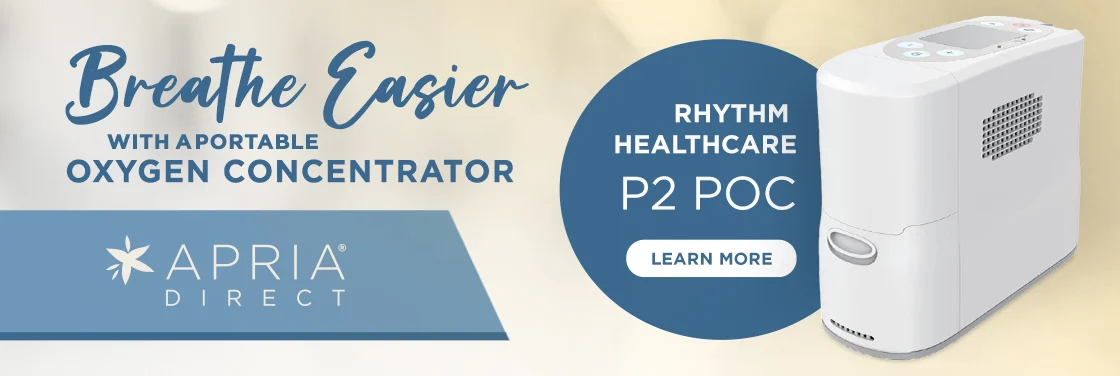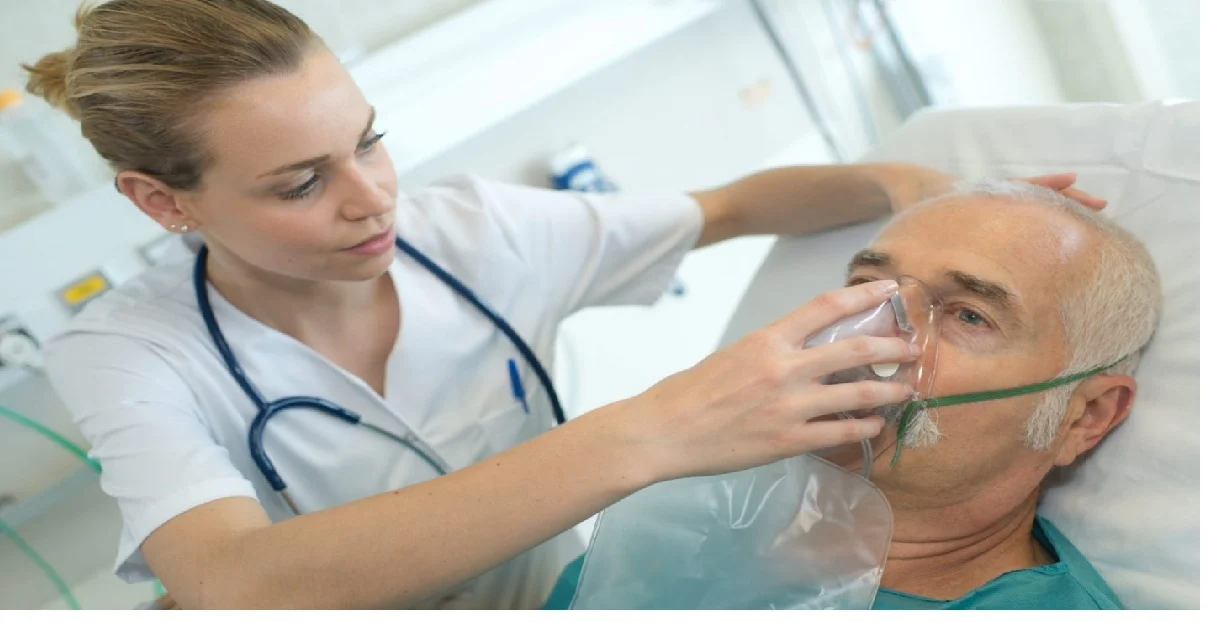Traveling With COPD? Oxygen? Here are Tips to Protect You.
Having COPD (chronic obstructive pulmonary disease) doesn’t mean you can’t travel. But travel may be more challenging, especially if you are flying. A recent study found that 25% more people with COPD experienced shortness of breath (also called hypoxia) when flying compared with those who didn’t have COPD.
You need to take certain precautions before taking a trip, especially if you’ve been newly diagnosed with COPD, are having increased COPD flare-ups, or have had a recent change in your medications.
Lesley Williams, Apria’s Market Clinical Trainer and a registered respiratory therapist, says, “The good news is, with proper planning, you can still enjoy vacations, visits to family and friends—and do it all safely.”
General Tips for COPD Travelers
Talk to your healthcare provider
Make this the first step in your journey. It’s important that your provider knows where you are going, for how long, and how you are getting there. Your provider can help you better prepare for your trip and may even advise a basic physical to ensure you are healthy enough to travel.
Refill all your medications
Stock up on your meds. Make sure you have enough to last the whole trip. Include extra doses.
Also, keep your meds in the container they came in, complete with prescription labels that include your name, each medicine’s name, and your doctor’s name.
If you’re flying, always, always, carry your medication in your carry-on bag; never check it with your luggage, which can get lost or delayed.
And speak with your doctor to ensure your vaccinations are up to date.
Pack your medical records
In case of an emergency, your records will help a healthcare professional who doesn’t know your medical history provide more effective treatment.
Your records should include your doctor’s name and contact information, a list of all your medications, and your supplemental oxygen prescription (if you have one).
Also include the names and phone numbers of people to contact in an emergency plus contact information of your airline or other transportation method and your destination, such as your hotel.
Keep these records handy. Like your medications, never check them with your baggage.
Review your insurance policy
Be sure your health insurance covers prescription refills in another state or country or emergency treatment that may be out of network. If not, you may need supplemental travel insurance.
You want to be sure your insurance is paid and up to date. Also, keep a copy of your insurance card with your other medical records.
Take care of yourself
Whether you are at home or on the road, it’s always important to take charge of your health. Get the rest you need, eat heart-healthy meals, and exercise regularly.
Traveling by Plane
Beware of high altitudes
Whether you’re on a plane or in a city of high elevation, high altitudes pose a challenge for people with COPD. The air is thinner—meaning lower levels of oxygen and more difficulty breathing.
Before traveling, your doctor may prescribe a high-altitude simulation test. This will help decide if you need supplemental oxygen.
If you are flying, you must carry on a portable oxygen concentrator since airlines don’t supply them. Also, alert the airline that you will be flying with portable oxygen.
Be sure you carry enough battery power to ensure your portable oxygen concentrator lasts the entire flight.
Protect against infection
Airplanes tend to be very dry. Plus, you’re surrounded by people for hours at a time. So it’s critical to reduce your risk of developing a lung infection. Here’s how:
- Wear a mask
- Wash your hands and carry sanitizer
- Drink lots of water and avoid diuretics that increase your need to urinate
- Take your prescribed antibiotics
Traveling by Car
Cars produce air pollution. Keep your windows up to keep out pollutants.
Try to avoid rush hour and, if possible, opt for back roads rather than busy highways.
If you have allergies, allergens can make COPD symptoms worse. Before you leave, check the allergen count of your destination and speak with your doctor about ways to control your allergies.
Traveling by Train or Cruise Ship
Both are considered among the easiest modes of transportation. Trains and ships allow you to bring supplemental oxygen. Just make sure you have plenty of oxygen and battery power for the whole trip.
Check with the train or cruise ship companies to learn if they have any special requirements for bringing supplemental oxygen. They may also ask for a note from your doctor.
Traveling with Oxygen
If you are on supplemental oxygen, your healthcare team—including the COPD specialists here at Apria—can arrange for supplies to be available at your destination and even provide the names of healthcare professionals in the area. Apria’s Lesley Williams adds, “The goal is to ensure you have the therapy you need—where and when you need it—for your trip!”
Don’t Skip Your Trip!
The fact is you can travel with COPD. Speak with your doctor, plan ahead, and follow the tips outlined here so you have a safe and healthy trip. You can do it!
References
1. Traveling with COPD. COPD Foundation. https://www.copdfoundation.org/Learn-More/I-am-a-Person-with-COPD/Traveling-with-COPD.aspx.
2. Leader, D. (Updated 2022, November 17). Traveling With COPD: Tips to Make Your Trip a Success. Verywell Health. https://www.verywellhealth.com/traveling-with-copd-914970.
3. Stinson, A. (Updated 2018, October 9). Does high altitude affect COPD? MedicalNewsToday. https://www.medicalnewstoday.com/articles/323292.
4. Howley, EK. (2017, September 22). How Can I Make Traveling With COPD Easier? U.S. News & World Report. https://health.usnews.com/health-care/patient-advice/articles/2017-09-22/how-can-i-make-traveling-with-copd-easier
LEGAL DISCLAIMER: Material in this newsletter is provided for general health education and informational purposes and to provide references to other resources only; it may not apply to you as an individual. While Apria Healthcare believes that the information provided through this communication is accurate and reliable, Apria Healthcare cannot and does not make any such guarantee. It is not intended to be a replacement for professional medical advice, evaluation, diagnosis, services or treatment (collectively, “medical treatment”). Please see your healthcare provider for medical treatment related to you and your specific health condition(s). Never disregard medical advice or delay seeking medical care because of something you have read on or accessed through this website. Reading this newsletter should not be construed to mean that you have a healthcare provider/patient relationship.


.png)


.png)
